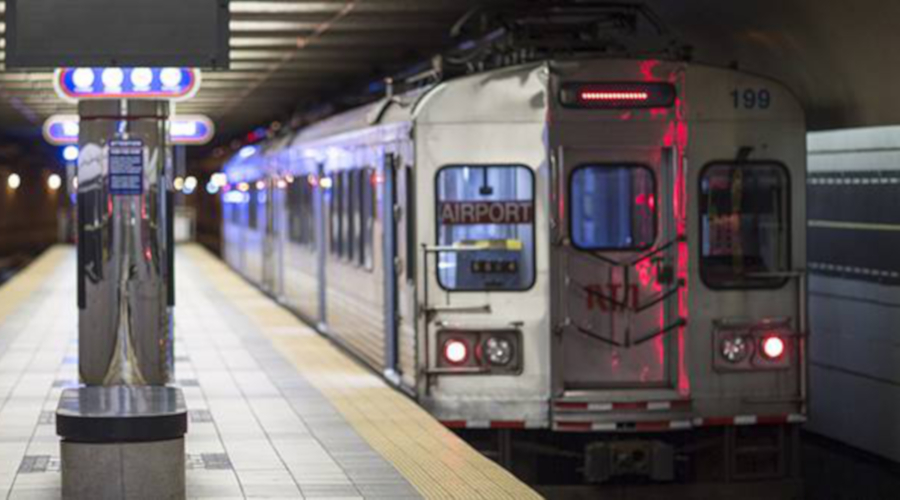When it comes to navigating the bustling city of Cleveland, the GCRTA Red Line is a vital component of the public transportation system. This extensive light rail line connects key neighborhoods to downtown, making it an essential service for residents and visitors alike. In this article, we will delve into the GCRTA Red Line’s history, route details, operational insights, and much more. Whether you’re a daily commuter or a first-time visitor, understanding the Red Line will enhance your travel experience in Cleveland.
The Greater Cleveland Regional Transit Authority (GCRTA) has been serving the community since 1975, with the Red Line being one of its most significant achievements. This article will provide you with a comprehensive overview of the Red Line, including its biographical data, operational features, and the impact it has on the city. By the end of this article, you will have a thorough understanding of how the GCRTA Red Line plays a crucial role in the daily lives of Clevelanders.
So, whether you're looking to explore the city's hotspots or simply want to know how to get around efficiently, this guide will serve as your go-to resource for all things related to the GCRTA Red Line.
Table of Contents
- 1. History of the GCRTA Red Line
- 2. Route and Stations
- 3. Operations and Schedule
- 4. Fares and Payment Options
- 5. Community Impact and Accessibility
- 6. Safety and Security Measures
- 7. Future Developments
- 8. Conclusion and Call to Action
1. History of the GCRTA Red Line
The GCRTA Red Line has a rich history that dates back to its inception. Originally opened in 1955 as a streetcar line, it was transformed into a light rail service as part of the GCRTA in 1975. The Red Line was designed to connect key areas of Cleveland, providing residents with an efficient way to travel.
Over the years, the Red Line has undergone numerous upgrades and expansions, enhancing its infrastructure and service quality. Today, it serves as a crucial link between the suburbs and downtown Cleveland, accommodating thousands of passengers daily.
Key Historical Milestones
- 1955: The original streetcar line opens.
- 1975: The line is integrated into the GCRTA light rail system.
- 1991: Major renovations are completed to modernize the infrastructure.
- 2010: The Red Line expands its service to the Cleveland Hopkins International Airport.
2. Route and Stations
The GCRTA Red Line stretches approximately 19 miles, connecting various neighborhoods and major attractions in Cleveland. The route runs from the southern suburb of South Park to the northern end at the Airport station, providing seamless access to several key destinations.
Major Stations Along the Red Line
- South Park: Starting point and a key suburban hub.
- Shaker Square: A vibrant shopping district with dining options.
- Downtown Cleveland: Connects to major business and entertainment districts.
- Cleveland Hopkins International Airport: Provides direct access for travelers.
3. Operations and Schedule
The GCRTA Red Line operates daily, with services running frequently to accommodate the demands of commuters. Trains typically run every 15-30 minutes, depending on the time of day.
Operational Insights
- Peak hours: Increased frequency during morning and evening rush hours.
- Off-peak hours: Reduced frequency, but still reliable service.
- Real-time tracking: Passengers can access live updates via the GCRTA app.
4. Fares and Payment Options
The fare structure for the GCRTA Red Line is designed to be affordable and accessible for all riders. Various payment options are available, making it easy for passengers to use the service.
Fare Structure
- Single ride: $2.50
- Day pass: $5.00
- Monthly pass: $100.00
Passengers can pay via cash, credit/debit cards, or through the GCRTA mobile app, ensuring a convenient experience.
5. Community Impact and Accessibility
The GCRTA Red Line has a significant impact on the communities it serves, providing essential transportation options for residents. It promotes economic development by connecting neighborhoods to job centers and educational institutions.
Accessibility Features
- All stations are equipped with elevators and ramps.
- Trains are designed to accommodate passengers with disabilities.
- Information available in multiple languages to cater to diverse communities.
6. Safety and Security Measures
Safety is a top priority for GCRTA, and the Red Line is no exception. Various measures are in place to ensure the well-being of passengers.
Safety Initiatives
- Regular safety drills for staff and emergency responders.
- Surveillance cameras installed at stations and on trains.
- Collaboration with local law enforcement for increased security.
7. Future Developments
As the city of Cleveland continues to grow, so does the need for efficient public transportation. The GCRTA Red Line is set to undergo several enhancements in the coming years, aimed at improving service quality and expanding its reach.
Proposed Improvements
- Expansion of the Red Line to underserved neighborhoods.
- Upgrading train car technology for energy efficiency.
- Increased frequency of service during peak hours.
8. Conclusion and Call to Action
In conclusion, the GCRTA Red Line is an indispensable part of Cleveland's public transportation network. It not only connects various neighborhoods but also enhances the overall quality of life for its residents. With a commitment to safety, accessibility, and future growth, the GCRTA Red Line is poised to continue serving the community effectively.
We encourage you to explore the GCRTA Red Line for yourself. Whether you're a local or a visitor, taking advantage of this service will undoubtedly enhance your experience in Cleveland. Share your thoughts in the comments below, and don't forget to check out our other articles for more insights on Cleveland's transit options!
Thank you for reading, and we look forward to seeing you back on our site soon!
WWE Speed Championship: A Comprehensive Guide To The Fastest Title In Wrestling
Suniel Shetty: A Journey Through The Life Of A Bollywood Icon
Ultimate Guide To Tekken 8 Tier List: Who Comes Out On Top?


